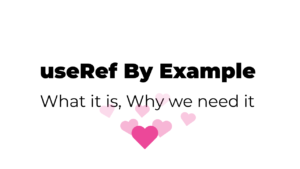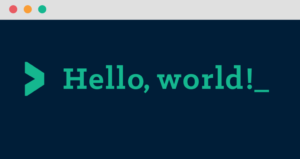As a React developer, you must have come across the terms “state” and “props” quite often. Both these concepts are fundamental to building React applications and play a crucial role in managing data within components. However, beginners often find it challenging to understand the difference between state and props and how to use them effectively. In this blog post, we will dive into the details of state and props and discuss how to use them to manage data efficiently in your components.
What is State?
State is an object that represents the internal data of a component. It can be changed over time, usually in response to user actions or other events. A component can have its own state, and changing the state will cause the component to re-render.
For example, consider a simple component that displays a counter. The state of this component would be the value of the counter.
class Counter extends React.Component {
constructor(props) {
super(props);
this.state = { count: 0 };
}
render() {
return (
<div>
<p>Count: {this.state.count}</p>
<button onClick={() => this.setState({ count: this.state.count + 1 })}>
Increment
</button>
</div>
);
}
}In the above code, the Counter component has a state object that contains a single property count, which is initialized to 0. The render() method displays the current count value, and when the button is clicked, the setState() method is called to update the count value and trigger a re-render.
What are Props?
Props are short for properties, and they are used to pass data from one component to another. Props are read-only and cannot be changed by the component receiving them. A component can receive props from its parent component or from a higher-order component.
For example, consider a Greeting component that displays a welcome message to the user. The message is passed to the component as a prop.
function Greeting(props) {
return <h1>Hello, {props.name}!</h1>;
}
ReactDOM.render(<Greeting name="John" />, document.getElementById('root'));In the above code, the Greeting component receives a prop name with the value "John". The name prop is accessed using the props object inside the component’s function body.
What is the Difference Between State and Props?
The main difference between state and props is that state is internal to a component and can be changed, while props are external to a component and read-only. State is used to manage data that can change over time, while props are used to pass data between components.
When to Use State vs Props?
Use state when you need to manage data that can change over time, and use props when you need to pass data between components. If a piece of data is not going to change, it should be passed as a prop. If it is going to change, it should be stored in state.
In general, you should aim to keep your components as simple as possible and minimize the number of pieces of data they manage. If a component is getting too complex, consider breaking it down into smaller, more manageable components.
Conclusion
State and props are fundamental concepts in React, and understanding their differences and how to use them effectively is essential for building high-quality React applications. Remember to use state for managing internal data that can change over time, and props for passing data between components. By following these
What will be on Next:
Stay tuned for our upcoming blog on React Hooks! This article will provide you with an introduction to React Hooks, including how to use useState, useEffect, and other hooks to simplify your React code. Whether you’re a seasoned React developer or just getting started, this article will help you understand the benefits of using React Hooks and how to implement them in your projects. Don’t miss out on this informative and engaging read!



